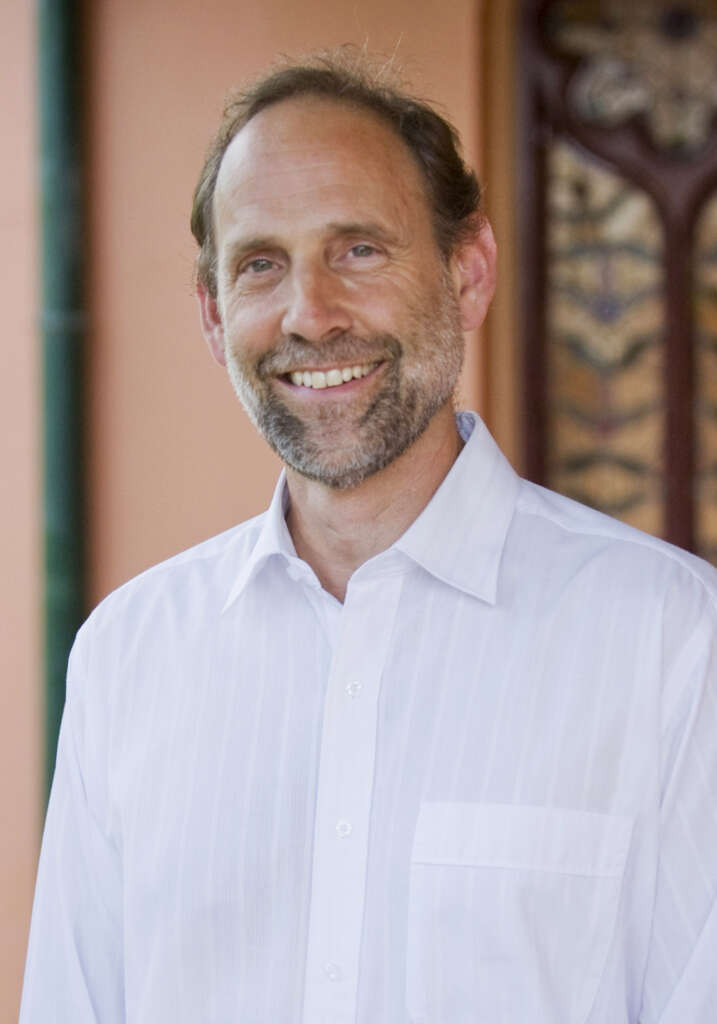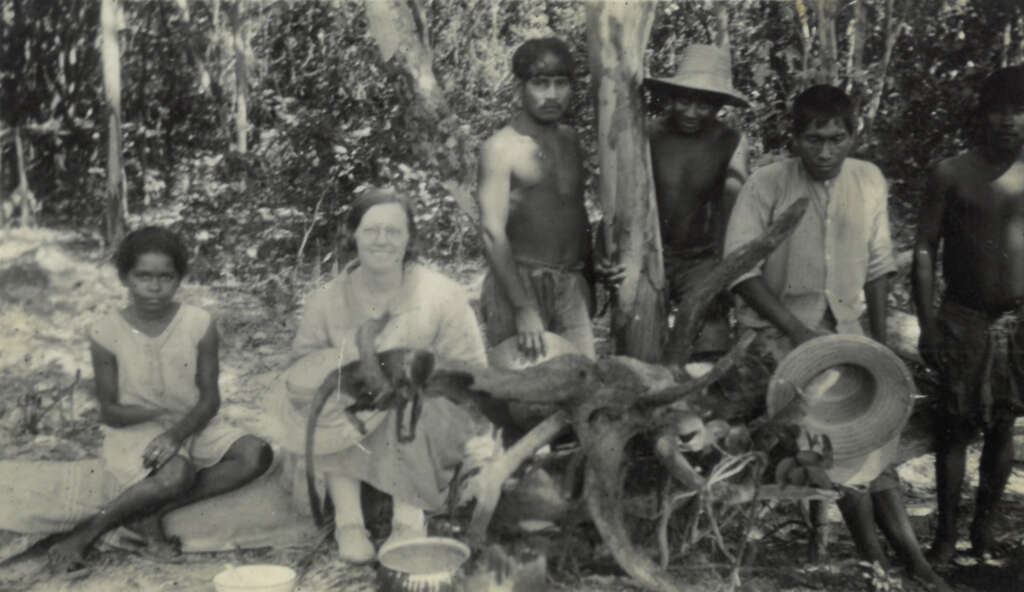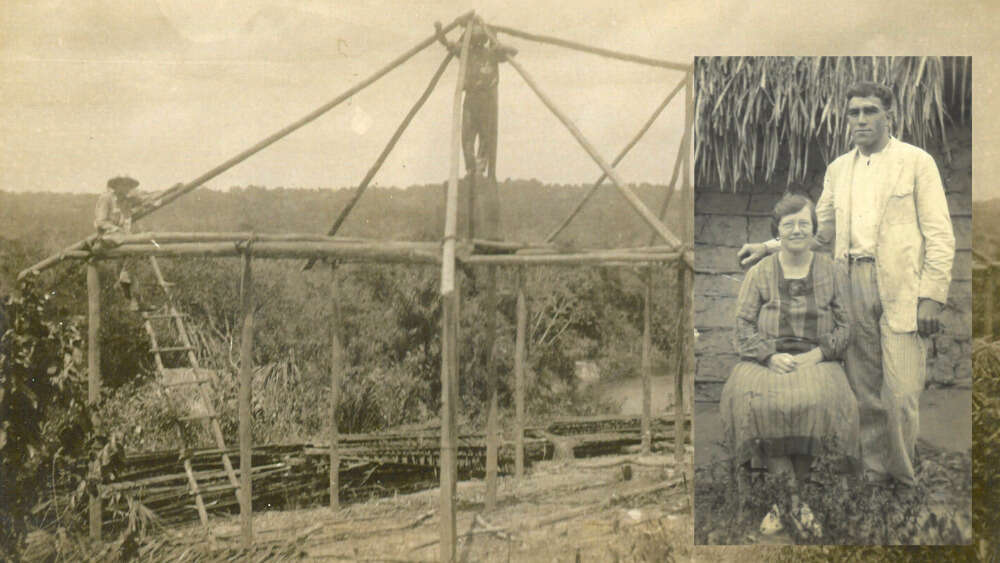Mabel Green had to travel for 17 nightmarish days by open canoe up the Amazon River with her new husband to a remote jungle mission station where he was bringing the gospel to Kayapo Indians of Brazil.
A new bride who had waited four years to join her husband in the field, Mabel was eager to serve the oppressed women of this unreached tribe. And yet the savage insect bites she sustained during the trip heralded the beginning of the end for the Queensland missionary. This gentle but intrepid follower of Jesus had spent almost her entire life preparing to bring the gospel to these women, yet she died after being with them for just six months.
To a secular eye, the life of Mabel Green seems absurdly cut short. Yet she serves as an inspiration to mission-minded modern Christians, for despite her disappointingly brief time among the women she loved before she ever met them, her work had a lasting impact.
Hardly anything was known about this dauntless woman before Anthony Brammall became fascinated by her while writing the centenary history of Sydney Missionary and Bible College (SMBC), Out of Darkness, published in 2016.
“So often, in mission, the work of women and especially married women, just manages to vanish.” – Anthony Brammall
One of the sad stories he told in that volume was of Fred Roberts, who was the first martyred student of SMBC.
“As I researched his story, I discovered that he actually married another one of our students, Mabel Green, and she’d gone over to Brazil as a missionary to marry him and work with him over there and only lived six months after they were married,” Brammall explains.
“So I thought I’d love to explore Mabel Green because so often, in mission, the work of women and especially married women, just manages to vanish and I thought it was really important to tell this.”

Anthony Brammall became fascinated by Mabel Green while writing the centenary history of Sydney Missionary and Bible College (SMBC), Out of Darkness, published in 2016.
He’s come to the conclusion that her life story of marriage, ministry and illness serves as an exemplar of sacrifice and perseverance – elements that are “fast being lost in our culture generally, but also the among Christians.”
Brammall, a former missionary to Indonesia who is now academic vice-principal at SMBC, had to put on his sleuthing cap to piece together an account of Mabel’s life for his new book, Never Going Home, published by SMBC this month.
Gathering information proved time-consuming, not only because the events happened so long ago – with many records lost between 1914 and 1930 – but there was nobody left alive who knew her.
“She had no offspring, so there are no descendants, and it was quite a job following little leads here and there,” he says.
His big coup was locating Mabel’s diary from 1929 that had been kept by her nephew, Warren Green, who lives in Sydney.
“He knew very little about her because it was such a tragedy for her parents that they really just closed up about her after she died and they just wouldn’t talk to the family about it.”
So what did happen to Mabel and why did she die so young, at just 29?
Born in Charters Towers in 1900, Mabel was an enthusiastic and committed servant of Jesus from an early age. When she moved with her family to Sydney in 1913, she attended Ashfield Methodist Church and started training herself for mission early, completing a diploma with Christian Endeavour then doing part-time studies at SMBC, along with a business studies course and a six-month crash course in nursing and midwifery.
“It was while she was studying at SMBC that she met Fred Roberts, whom she was to marry, and he was getting ready to go to the Amazon with two other SMBC chaps,” Brammall relates.
“So they became engaged and off he went in 1925, or end of 1924. And she had to wait four years to wait before being reunited.”
Brammall continues the tale: “When she was accepted as a missionary by Worldwide Evangelisation Crusade (WEC), the same missionary society as had sent Fred, she got ready to go and departed in 1928.
“After a few months of training in England, she proceeded to Brazil, did her orientation for several months at one of their field headquarters, and then finally travelled to the capital of that province or state, and was reunited with Fred. They got married a few days later, and then set off for the place where he was working.”
As Brammall discovered, it was a “gruesomely difficult voyage” up tropical rivers, coping with “savage insects”.
“On the trip up to his mission station, which took 17 days by open canoe, she just had terrible insect attacks. And that was really the beginning of her physical downturn. When she got to the mission station, she was only fit and moderately healthy for about two months before a number of diseases – plus, it turns out, early pregnancy – struck her. And that was the beginning of the end for Mabel. She died in November, having been married in May.”
The story of Fred Roberts, who was martyred about six years after Mabel died, had already been told because he was one of three missionaries called The Three Freds, who all felt called to take the gospel to unreached Indians of Brazil. But Mabel also had a compelling calling to share the gospel with Indian women.
“They had six months of married life together, and in the first few months, she was very involved in, firstly, typing up his translation work. He was beginning to translate the New Testament, hymns and songs for the Indians and writing a dictionary of the local Indian language – because they were the first outsiders to learn them.
“She took real joy and worked very assiduously at that, but her great focus from long before she actually got to Brazil, was to share the gospel with Indian women, Amazon Indian women, and she just loved them even before she’d met them. It was a real incarnational ministry approach.
“So she wanted to be with them. She wanted to help them and advocate for them and heal them as far as her nursing training would allow, but she especially wanted to speak the gospel, and in her letters home she implores her sisters back in Australia to think about coming over to help her take the gospel to these unreached and very oppressed women.”
“She wanted to be with them. She wanted to help them and advocate for them and heal them.” – Anthony Brammall
Mabel had experienced their isolation and partaken in many of their struggles – their cultural oppression by the nature of Indian society, their economic oppression, because of their meagre food and resources, and political oppression by the Brazilian government “and particularly by rubber and gold traders, who often shot natives almost for sport.” Lastly, they were burdened by spiritism – the dark powers of evil, witchcraft and superstition of the unreached tribes.
“So it was really an awfully difficult, sad life for them,” Brammall concludes.
Even though Mabel’s ministry was cut tragically short, it was not without visible fruit, he claims.
“They knew that she loved them, and they knew that she came from an easy place to a hard place to love them and share with them. She treated them medically, as far as she could with the limited resources and the limited training that she had. She had begun to teach them to read their own language, certainly not English or Portuguese, which was a government language, but their own language, which Fred and his colleague had started to get down into a dictionary.
“So she was teaching them to read, the children as well as women, running daily lessons for them, teaching them the Bible as well as she could, and helping with the translation work.”
“She was teaching them to read … teaching them the Bible as well as she could, and helping with the translation work.”
So, what was it that actually killed her? “Well, that’s hard to know exactly. It seems that she had contracted the disease called Erysipelas. It’s a bacterial infection. She may have contracted that from an Indian woman that she treated who had a very difficult labour in the early weeks that she was over there,” says Brammall.
“So a combination of this disease Erysipelas and infections from diseased insect bites, and early pregnancy. In the last few months of her life, she may have had a few disease processes going on as well. There’s no talk of malaria, but she may well have had malaria, and there was a biting insect that probably infected her. I used to be a nurse in a past life, and from the description of her symptoms, she almost certainly had renal failure and probably liver failure towards the end as well.
“She took the remedies of the day. She was even taking arsenic, which was thought to be effective against some infections, but arsenic is a poison as well. So it’s hard to pin down exactly, but I think just a toxic combination of various diseases.”
“When you go back to Australia, can you please bring me another mother like her?” – orphaned girl
When Mabel died, she was buried alongside an English missionary who had pioneered the work just a few years before. And local women, of Sapucaia, used to come and gather around to her grave to express their love and appreciation of the work that she’d done, according to Brammall.
“One little orphan girl whose mother had been shot, who Mabel had taken under her wing, said to one of the other missionaries, ‘When you go back to Australia, can you please bring me another mother like her?’ So that was how they perceived her caring for them.
“And a few years after she died, a missionary in a neighbouring tribe told them the story of Mabel. And as they heard her story and reflected on it, a small number of those women actually came to Christ because of the sacrifice that they had heard of her making. So evangelism in death as well as in life.”
“Evangelism in death as well as in life.” – Anthony Brammall
It’s a moving story that Brammall believes can take people back to a time and place where the gospel of Jesus was lived out sacrificially and in obedience.
“It’s helped me to see that what God asks of his people is obedience and perseverance,” he says.
“We want to find quick answers to things, quick answers to how to get the gospel to people, quick answers to holiness or growth to maturity or any number of things.
“But a lot of the time following Jesus is just a matter of slogging along for the long haul, knowing that we don’t necessarily see everything from the beginning, but He does!”
“And that’s going to lead us into all sorts of difficult and unpleasant situations. But Mabel shows me that it’s worth it for the sake of Christ. It’s worth being willing to do those things.”
You can order a copy of Never Going Home here.

Mabel holding a monkey during a lunch stop on a canoe journey.
Email This Story
Why not send this to a friend?


